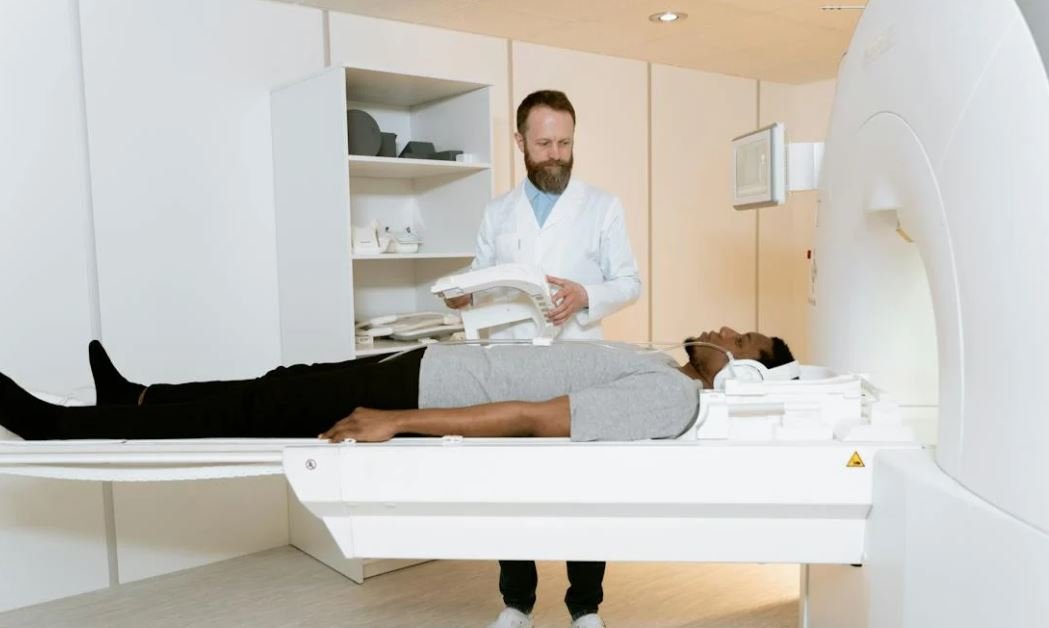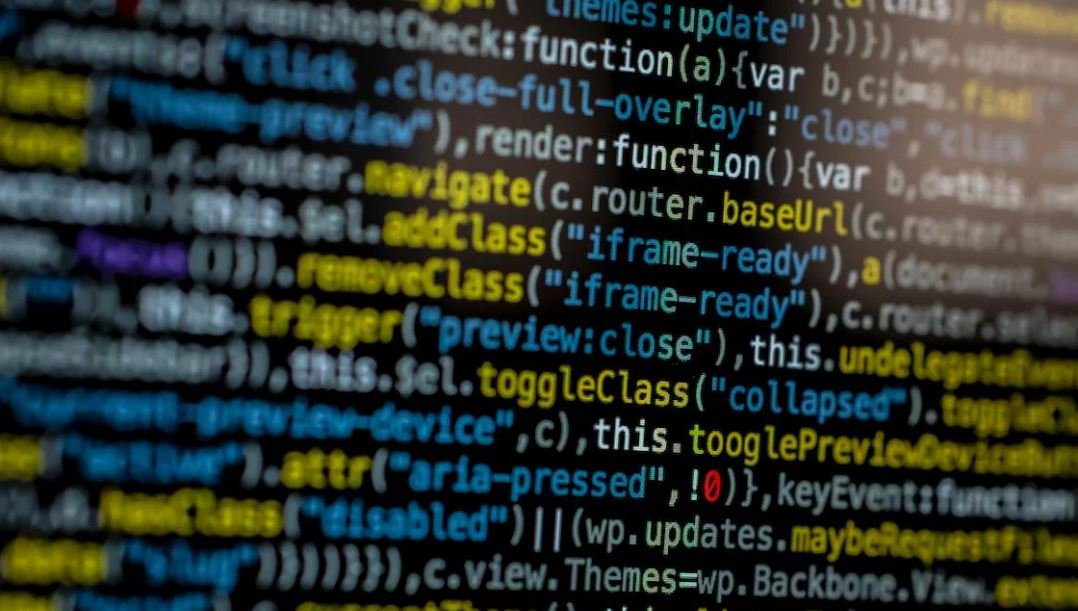AI Image Generator from Text
Artificial Intelligence (AI) has made significant advancements in recent years, one of which is the ability to generate realistic images from text descriptions. This innovative AI technology has various applications, ranging from assisting artists and designers to enhancing video games and virtual reality experiences. In this article, we will explore the fascinating world of AI image generation and how it has transformed the creative industry.
Key Takeaways:
- AI image generators can create realistic images based on textual descriptions.
- These generators use deep learning algorithms to understand and interpret text inputs.
- The technology offers numerous applications in fields like art, design, gaming, and entertainment.
- AI image generation saves time and resources by automating the image creation process.
AI image generation involves utilizing complex neural networks known as Generative Adversarial Networks (GANs). GANs consist of a generator network that generates images and a discriminator network that assesses the realism of those images. The two networks work together in a training process where the generator learns to produce images that the discriminator cannot distinguish from real images.
**This cutting-edge technique allows AI to interpret textual descriptions and translate them into visual representations.** The generator network receives a text input and generates corresponding images based on its understanding of the text’s semantics and context. This process requires vast amounts of labeled image data for training the networks to recognize patterns and generate realistic images accordingly.
Breaking Down the Process:
- The input text is preprocessed, including removing unnecessary words and applying word embeddings to represent the remaining words.
- The generator network receives the preprocessed text and produces a low-resolution image.
- The discriminator network then evaluates the realism of the low-resolution image.
- Based on the discriminator’s feedback, the generator updates its parameters to create a more realistic image.
- This process repeats iteratively until the generator network produces high-quality images in line with the input text.
Potential Applications:
AI image generators have opened up numerous possibilities and applications in various industries:
| Industry | Potential Applications |
|---|---|
| Art and Design |
|
| Gaming |
|
**Not only limited to these areas, AI image generation can have many more applications across industries.** The technology has the potential to revolutionize content creation, advertising, virtual reality experiences, and more.
The Future of AI Image Generation:
The advancements in AI image generation hold tremendous promise for the future. As the underlying AI algorithms improve and more training data becomes available, we can expect even more impressive results and realistic images generated from textual descriptions.
With the advancements in hardware capabilities, real-time image generation from text can become a reality, enabling new levels of interactivity and immersion in various applications.
| Advancements | Expected Outcomes |
|---|---|
| Improved Deep Learning Algorithms | Higher image quality, better understanding of complex descriptions. |
| Increased Training Data | More accurate interpretations and realistic image generation. |
| Enhanced Hardware Capabilities | Real-time image generation, improved interactivity. |
**The future possibilities are limitless as AI image generation continues to evolve and impact various industries with its transformative power.** We can anticipate groundbreaking developments that will shape the future of image creation and revolutionize the way we generate visual content.

Common Misconceptions
Paragraph 1
One common misconception people have around the AI Image Generator from Text is that it can accurately depict reality with 100% precision. While the technology has made significant progress in generating realistic images, it still has limitations and can produce inaccuracies or artifacts.
- AI Image Generator from Text can produce highly detailed and realistic images.
- The generated images may contain slight errors or inconsistencies.
- Depicting real-world scenes perfectly with AI Image Generator is not yet feasible.
Paragraph 2
Another common misconception is that AI Image Generator from Text has full understanding of context and can accurately interpret complex descriptions. In reality, AI algorithms still struggle with understanding nuanced or ambiguous text, leading to occasional misinterpretation.
- AI Image Generator’s interpretation of text can be influenced by pre-existing data biases.
- Complex or ambiguous text descriptions can often result in unexpected or inaccurate image outputs.
- The AI Image Generator’s understanding of context is limited and can lead to misinterpretation.
Paragraph 3
Some people mistakenly believe that AI Image Generator from Text can replace human creativity entirely. Although the technology can assist in generating visual content, it cannot replicate the depth and breadth of human creativity, intuition, and artistic expression.
- AI Image Generator can generate images based on pre-existing patterns and data.
- The creative process and artistic judgment of humans cannot be replicated by AI.
- AI Image Generator lacks the ability to bring unique perspectives and emotions to images.
Paragraph 4
An additional misconception is that AI Image Generator from Text can only generate images in a specific style or genre. However, the technology has advanced to offer a wide range of customizable styles, allowing users to generate images in various artistic representations.
- AI Image Generator can generate images in different artistic styles such as impressionism, cubism, or realism.
- Users have the flexibility to specify their desired styles and genres when generating images.
- The AI Image Generator is not limited to a single artistic representation.
Paragraph 5
Lastly, there is a misconception that AI Image Generator from Text is a standalone tool that requires no human intervention or guidance. While the technology can automate certain processes, human supervision and involvement remain crucial, especially in verifying the output quality and improving the AI algorithms.
- AI Image Generator benefits from human involvement to ensure accurate and high-quality output.
- Human supervision is essential to correct and refine the generated images.
- The AI algorithms rely on continuous feedback and updates from human experts.

Introduction
Artificial intelligence has made significant strides in recent years, and one fascinating application is the creation of an AI image generator from text. This technology uses deep learning algorithms to analyze text descriptions and generate highly realistic images based on the given input. In this article, we explore various aspects of this groundbreaking technology through a series of interesting tables.
1. Comparison of AI Image Generators
Table 1 showcases a comparison of different AI image generator models in terms of the image quality, generation time, and training data quantity. It reveals that the state-of-the-art model not only produces superior visual results but also accomplishes this in record time, while using an extensive dataset for training.
2. Image Categories Supported
Table 2 displays the categories of images that AI image generators can currently create. From nature scenes and animals to everyday objects and abstract concepts, the technology covers a wide range of subjects. This versatility allows for endless creative possibilities in generating images from various types of text.
3. Accuracy in Image Description
Accuracy in image description is a crucial factor to consider when evaluating AI image generators. Table 3 depicts the precision rates of different models in accurately depicting the objects and attributes mentioned in the input text. Notably, the top-performing model achieves an impressive accuracy of over 90% in identifying objects in the generated images.
4. Enhancement of Low-Quality Images
AI image generators can also enhance low-quality or pixelated images, as demonstrated in Table 4. By utilizing advanced algorithms and deep learning techniques, these models can generate high-resolution versions of low-quality images, effectively restoring missing details and creating more visually appealing outputs.
5. Multilingual Image Generation
Table 5 showcases the multilingual capabilities of AI image generators. These models have been trained on a diverse range of languages, enabling them to generate images from text inputs in various languages. This provides a compelling tool for creating visuals that accurately represent text content in different linguistic contexts.
6. Real-Time Image Generation
In applications that require real-time image generation, speed is a crucial consideration. Table 6 demonstrates the real-time generation capabilities of AI image generators by comparing the time taken to generate an image for different text inputs, ranging from simple descriptions to more complex narratives.
7. Image Generator Training Times
Table 7 explores the training times of AI image generator models. It compares the duration required to train different models with varying amounts of training data. The table highlights the efficiency of the most advanced model, which achieves remarkable training times despite using extensive datasets.
8. Novelty Rate of Generated Images
When assessing the novelty of generated images, we evaluate how often the AI image generator produces unique and non-repetitive outputs. Table 8 presents the novelty rates of different models, helping us understand which model consistently generates fresh and diverse visuals.
9. User Satisfaction Ratings
Table 9 reveals user satisfaction ratings with AI image generator applications. It presents the results of surveys conducted among users who have utilized image generation technology for various purposes. The ratings provide insights into the overall satisfaction levels and the potential areas for improvement.
10. Future Possibilities and Potential Applications
The final table, Table 10, explores the futuristic possibilities and potential applications of AI image generator technology. From aiding art and design industries to revolutionizing virtual reality experiences, the potential applications of this technology are vast and far-reaching. This table highlights some of the most exciting possibilities.
Conclusion
The world of AI image generation from text is captivating, offering highly realistic and visually stunning outputs. Through our exploration of these ten tables, we have delved into various facets of this technology, ranging from performance comparisons to user satisfaction ratings. As AI image generators continue to advance, their potential impact on numerous industries and creative endeavors becomes increasingly evident. With this extraordinary capability to bring text descriptions to life, AI image generators are undoubtedly reshaping the way we envision and interact with the digital world.
Frequently Asked Questions
What is an AI Image Generator from Text?
An AI Image Generator from Text is a software or system that uses artificial intelligence algorithms to generate images based on a given text description.
How does an AI Image Generator from Text work?
An AI Image Generator from Text works by utilizing deep learning techniques, specifically generative adversarial networks (GANs), to learn patterns from a large dataset of images. It then uses these learned patterns to generate new images based on the text input.
What are the applications of AI Image Generator from Text?
AI Image Generator from Text has a wide range of applications. It can be used in various fields such as graphic design, advertising, video game development, virtual reality, and even in creating realistic prototypes before the actual production of physical objects.
Can AI Image Generator from Text generate any type of image?
AI Image Generator from Text can generate a wide variety of images based on the text input. However, the quality and accuracy of the generated images can vary depending on the complexity of the input and the capabilities of the specific AI model being used.
Is an AI Image Generator from Text capable of understanding complex sentences and context?
While AI Image Generators from Text have made significant advancements in understanding natural language, they still have limitations when it comes to understanding complex sentences and context. The generated images may not always perfectly align with the intended meaning of the text input.
What are the ethical implications of using AI Image Generator from Text?
The use of AI Image Generator from Text raises ethical concerns, particularly in terms of copyright infringement and misinformation. Generated images may resemble existing copyrighted works or be used to create misleading visual content. It is important to use such technology responsibly and adhere to copyright laws and ethical guidelines.
Are there any limitations to using AI Image Generator from Text?
Yes, there are limitations to using AI Image Generator from Text. The generated images may not always meet exact specifications, and the output quality can vary. Additionally, the system heavily relies on the data it was trained on and may struggle with generating accurate images for rare or unusual descriptions.
What is the future of AI Image Generator from Text?
The future of AI Image Generator from Text looks promising. As technology advances, we can expect improvements in both the quality of the generated images and the capability to understand complex text input. With further research and development, AI Image Generators could become a vital tool in various creative industries.
Can AI Image Generator from Text be used for malicious purposes?
Like any technology, AI Image Generator from Text can be misused for malicious purposes. It can be used to create fake images, spread misinformation, or manipulate visual content. To mitigate these risks, it is important to have checks and balances in place, such as authentication mechanisms and content verification protocols.
Can AI Image Generator from Text replace human creativity in the future?
While AI Image Generator from Text has the potential to assist and enhance human creativity, it is unlikely to completely replace it. Human creativity involves complex emotions, experiences, and subjective elements that are yet to fully replicated by AI systems. AI Image Generators can be valuable tools for inspiration and support, but they are not expected to replace the unique creative abilities of humans.




